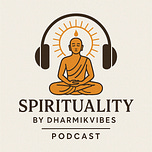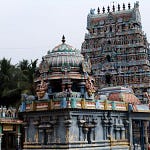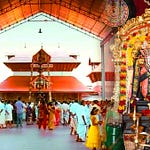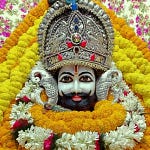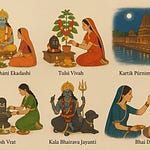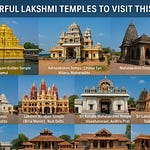The Golden Triangle of spirituality—Ayodhya, Prayag (Allahabad), and Kashi (Varanasi)—forms one of India's most revered pilgrimage circuits. Nestled along the sacred rivers Ganga, Yamuna, and the mythical Saraswati, these cities represent the deepest essence of India's spiritual heritage. Each site is renowned for its distinctive religious aura, ancient temples, vibrant rituals, profound festivals, and sacred tirthas (holy waters).
1. Ayodhya – The Land of Dharma and Birthplace of Lord Rama
Historical & Spiritual Significance
Ayodhya, situated on the banks of the serene Sarayu River, is deeply embedded in Hindu consciousness as the birthplace of Lord Rama, the seventh avatar of Lord Vishnu. It's considered one of the seven Mokshapuris (cities granting liberation). Ayodhya symbolizes righteousness (dharma) and the ideal way of life.
Important Temples & Sacred Sites
Ram Janmabhoomi Temple: This is the holiest spot, marking Lord Rama's birthplace. After decades of controversy, it has been beautifully reconstructed, emerging as a major pilgrimage center.
Hanuman Garhi: Dedicated to Lord Hanuman, located on a small hill offering panoramic views.
Kanak Bhawan: Known as the palace gifted by Kaikeyi to Goddess Sita; a symbol of marital harmony and divine love.
Nageshwarnath Temple: Established by Kush, Rama’s son, commemorating Shiva.
Rituals & Festivals
Ram Navami: Celebrated extensively to mark Rama's birth anniversary with rituals, bhajans, and processions.
Deepotsav: Ayodhya lights up with thousands of earthen lamps (diyas), symbolizing Rama’s return after exile.
Tirthas and Ghats
Guptar Ghat: Believed to be the spot from where Lord Rama departed to his heavenly abode.
Sarayu River Bathing: Ritual bathing is considered purifying and sacred.
2. Prayag (Prayagraj) – The King of Holy Confluences
Historical & Spiritual Significance
Prayag or Prayagraj, known as 'Tirtharaj'—the king of pilgrimage sites—is the holy confluence (Triveni Sangam) of the sacred rivers Ganga, Yamuna, and mythical Saraswati. This city symbolizes spiritual purity, eternal knowledge, and liberation from the cycle of rebirth.
Important Temples & Sacred Sites
Bade Hanuman Mandir (Lete Hanuman): Famous temple housing a massive reclining Hanuman idol.
Alopi Devi Temple: One of the significant Shakti Peethas, known for its unique deity form without a conventional idol.
Patalpuri Temple & Akshayavat Tree: Believed to be eternal; pilgrims circumambulate to seek divine blessings.
Rituals & Festivals
Kumbh Mela: Largest spiritual gathering on earth, occurs every twelve years, drawing millions of pilgrims for ritual baths at Sangam.
Ardh Kumbh and Magh Mela: Smaller yet profoundly significant gatherings; pilgrims immerse themselves to cleanse sins and rejuvenate spiritually.
Tirthas and Ghats
Triveni Sangam: Sacred bathing site where rituals like pind daan (ancestral rituals) are performed for liberation and ancestral blessings.
Saraswati Koop: A sacred well symbolizing the hidden Saraswati River.
3. Kashi (Varanasi) – City of Eternal Spiritual Enlightenment
Historical & Spiritual Significance
Kashi, also known as Varanasi or Banaras, is one of the oldest continuously inhabited cities globally. Renowned as Shiva's city, it embodies spiritual liberation (moksha), learning, and timeless wisdom. It’s said that dying in Kashi grants freedom from the cycle of rebirth.
Important Temples & Sacred Sites
Kashi Vishwanath Temple: Dedicated to Lord Shiva, this Jyotirlinga temple is a significant pilgrimage site, considered the heart of Kashi.
Kal Bhairav Temple: Guardian deity of Varanasi; pilgrimage is incomplete without Bhairav’s blessings.
Sankat Mochan Hanuman Temple: Established by saint-poet Tulsidas, renowned for resolving devotees' troubles.
Durga Temple (Durga Kund): Ancient temple associated with Goddess Durga, famed for its spiritual energy.
Rituals & Festivals
Ganga Aarti: Magnificent daily evening ritual at Dashashwamedh Ghat, enchanting thousands of devotees.
Mahashivratri: The most celebrated festival, involving night-long vigil, fasting, and special pujas dedicated to Shiva.
Dev Deepawali: Celebrated on Kartik Purnima, ghats are illuminated with millions of diyas, symbolizing the gods descending to Earth.
Tirthas and Ghats
Manikarnika Ghat: Principal cremation ghat, symbolizes liberation, continuously burning pyres reflect the cycle of life and death.
Dashashwamedh Ghat: Historical importance linked to Lord Brahma’s sacrifice; spiritual heart of Kashi.
Golden Triangle Pilgrimage – Spiritual Connectivity
The triangle connecting Ayodhya, Prayag, and Kashi is significant as it aligns life's spiritual journey from birth (Ayodhya representing Dharma) through purification (Prayag representing cleansing) to spiritual enlightenment and ultimate liberation (Kashi representing Moksha).
Pilgrims traditionally follow this sequence:
Ayodhya: Understanding Dharma, the righteous living exemplified by Lord Rama.
Prayag: Ritual bathing at Sangam to purify sins and perform rituals for ancestors.
Kashi: Seeking Shiva's blessings and liberation from worldly attachments and the cycle of rebirth.
Spiritual Practices for Pilgrims
Ayodhya: Chanting Ramcharitmanas, devotional singing, visiting temples.
Prayag: Ritual bathing, offering pind daan, reciting sacred texts like Bhagavad Gita.
Kashi: Participating in rituals like Shiv Abhishek, attending spiritual discourses, meditations along Ganga ghats.
Traveling Tips and Recommendations
Ideal pilgrimage season spans from October to March, ensuring pleasant weather and vibrant festivals.
Participate in local rituals and immerse yourself in the unique spiritual ambiance each city offers.
Opt for guided pilgrimage tours, providing historical, cultural, and spiritual insights enhancing the overall experience.
Embracing the Spiritual Legacy
Ayodhya, Prayag, and Kashi collectively illuminate the path of righteousness, purity, and spiritual awakening. Traveling this divine triangle provides pilgrims with transformative spiritual experiences, immersing them in India's timeless tradition and eternal wisdom. This sacred circuit remains an enduring testament to India's profound spiritual ethos, calling upon every devotee to journey through life’s ultimate spiritual truth and liberation.

